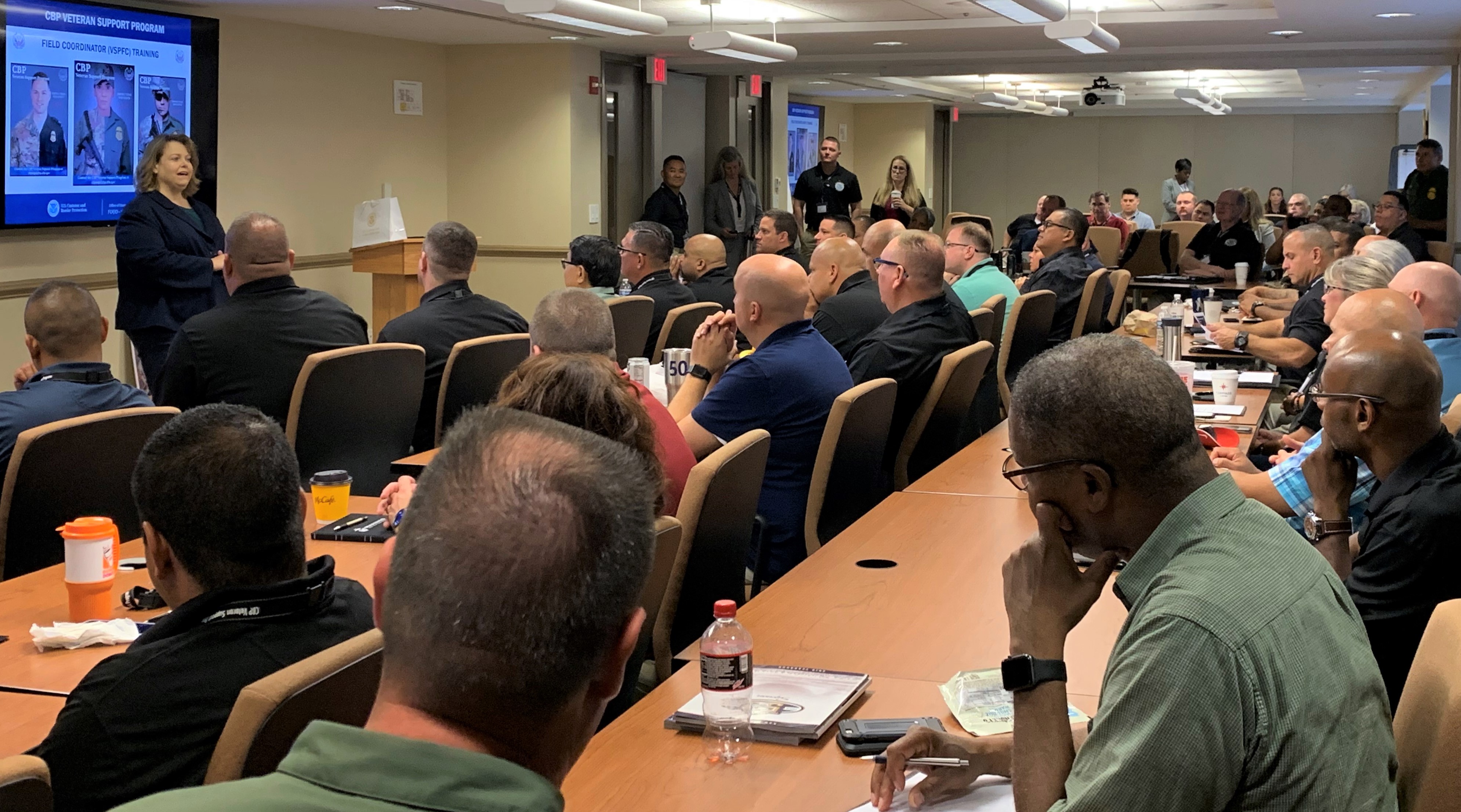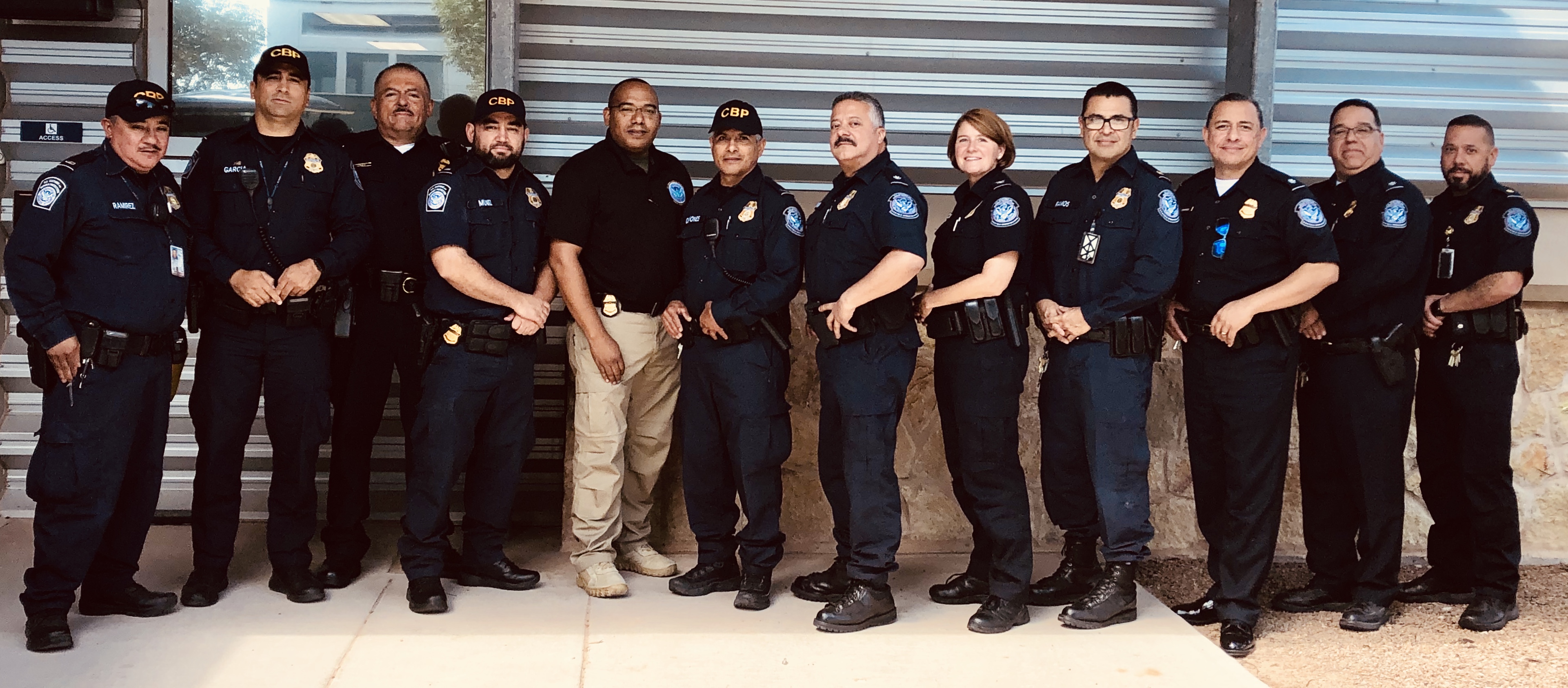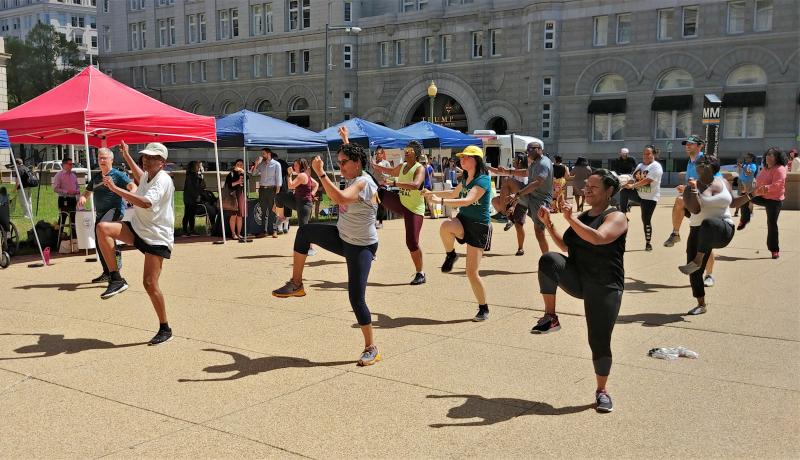
CBP Resiliency

Photo by Fabrika Simf | Shutterstock.com
When Laredo Sector Agent Joshua Guell joined the U.S. Border Patrol in 2007, he had already served four years in a U.S. Army ranger battalion with five deployments to Afghanistan and Iraq. He qualified for an array of veteran benefits.
But when Guell, who works in the Laredo Sector, tried to find out which ones and how to get them, he quickly realized one thing: He felt as if he was on his own.
Undaunted, he forged straight into the maze of the Department of Veterans Affairs regulations. He made contacts, learned the shortcuts and turned administrative loops into clear directions. He soon amassed a mountain of knowledge — where to go, who to see, what to do— and he made himself available so other CBP veterans and their families could learn about their benefits and get them quickly.
“I knew there were others like me,” Guell said. “Most CBP personnel are transplants. They don’t know. I didn’t even know Laredo had a VA office.”
And Guell didn’t know his work would soon grow into an agency-wide program.
As he began speaking about veteran’s benefits at agent events and visiting local veteran organizations to build a support network, word spread about Guell’s expertise. He became the station’s and eventually the sector’s go-to guy for guidance. “People started coming out of the woodwork,” as he described the demand.
Some requests are routine — how to fill out a form, who to contact, how to credit military service into federal service, for example. Others, more complex, such as family problems or personal issues, at times coming to Guell’s attention in a frantic middle-of-the-night phone call. “Typically, several issues would surface in one conversation,” he said. Once, Guell drove 200 miles — on his own dime — to help a distressed agent find some needed resources.
His success in Laredo caught the attention of Border Patrol and CBP leadership, and Guell was brought to Washington, D.C. He worked with the Office of Human Resources Management to develop an agency-wide program with the services, resources and benefits to support CBP’s veterans.

Connecting directly to CBP’s workforce and their families as in this 2017 family outreach event in Hidalgo, Texas, is one way the agency promotes its myriad services and resources with enough booths to fill the floor of this huge stadium. They included HealthierCBP, the National Resiliency Task Force and CBP’s Mentoring and Employee Engagement programs. Photo by Craig Kenner
The CBP Veteran Support Program (VSP) was officially launched with a three-day training event in September, 2019 that featured presentations from representatives of some of the nation’s most prominent veteran groups. A remarkable 54 volunteers from 33 CBP locations attended the event. These volunteers, also known as Field Coordinators returned to their locations to develop community contacts, build a local veteran support network and recruit volunteers to work with CBP’s veterans in their region.
Guell sees these Field Coordinators as facilitators and sums it up this way: “They just need to know a little about everything, but not be experts in anything. They need to know where to point the veteran.”
Take Officer Mike Sia, a dedicated Field Coordinator at the Office of Field Operations Buffalo, New York. He’s dealt with about 170 issues during October alone. “I will go with people to a claims office. I will go to someone’s home. I will spend hours walking them through the disability process. I can get a call at 2 a.m., but I don’t consider it work,” the Marine Corps veteran explained.
“The best complement I can get is ‘You make it easy,’” Sia said.
CBP’s Veteran Support Program is a network of volunteer coordinators and program members who give their time to assist other veterans.
The program, which resides within the agency’s Workforce Resilience and Engagement Division in the Office of Human Resources Management, is still evolving. Focus groups have generated policy, and the division has developed standard operating procedures.
Monthly metrics on veteran issues have also been developed and produce reports to leadership. So far, military time buyback, on-the-job training and applying for disability have emerged as the top three inquiries.
Considering its short tenure, the program has soared.
“CBP’s Veteran Support Program has some of the best practices within DHS (the Department of Homeland Security) and is being modeled by TSA (the Transportation Security Administration) with interest from other agencies,” noted Efren Garcia, a retired Air Force colonel and former program manager who helped develop the program.
Demand will likely increase as CBP strives to fill vacancies with veterans. Currently, veterans make up nearly 30% of CBP’s workforce, a substantial group considering veterans make up just 7% of the nation’s 321 million population.

Office of Human Resources Management Assistant Commissioner Andrea Bright speaks at the first workshop on veteran’s benefits and services where a notable 54 volunteers from 33 CBP offices completed the training. Upon returning home, they managed the Veteran Support Program for CBP veterans in their region. Photo by Trina Gonzalez
Support for all
Along with the Veteran Support Program, CBP stands ready to help all employees and their families through 34 support services, covering a wide range of life’s challenges. They include financial management, communication and relationship support, mental health, counseling, child and elder care, and suicide intervention. The programs are designed to meet the mental, physical, social and spiritual needs of CBP employees and their families, said Woody Lee, the Division’s Director.
By meeting those needs, Lee said, the division realizes two objectives: strengthening the overall safety, health and wellness of employees and families; and making CBP a top choice to build a career through a supportive workplace that reduces attrition. Employee and family resiliency is a priority of the Commissioner, CBP executive leadership and the Department of Homeland Security.
Child care can create family stress, and it’s a service in high demand, said Rita Hubbard, the Deputy Division Director. In response, the family income ceiling to qualify for the service was raised from $50,000 to $144,000. In 2019, a “back up care” benefit was added that provides employees five days of child, elder and even pet care if normal arrangements fall through.
Money can be another stressor. CBP families can find solutions through the Dave Ramsey Financial Peace University, and receive tips and techniques for debt management and budgeting. Families can also take advantage of 12 free one-on-one counseling sessions per year through the Employee Assistance Program.

the Environmental Protection Agency and Federal Occupational Health in
sponsoring the Walk to Wellness Health Fair in Washington, D.C., drawing
over 300 participants, including this group of kickboxers. The resiliency
event showcased the services and benefits available to employees and
their families. Photo by Craig Kenner
Mindfulness training, another benefit, is a stress-lowering strategy using meditation and focus to help participants relax and decompress.
Although CBP’s Resiliency Program has been promoted since 2017, it’s not widely known, especially among employee families, according to Lee. “We need to get the word out,” he said. “We need to reach the family members who are unaware of the resources available to them.”
Part of that effort involves a “cultural change” throughout the agency, where reaching out for help isn’t unusual. “There’s a stigma for asking and receiving help,” Lee said, particularly among those in law enforcement positions.
He noted the irony against seeking help because CBP employees spend their careers helping others.
“Our emphasis is on building trust and spreading the word that it’s a sign of strength when you seek help,” he said. Building trust can be challenging among law-enforcers because their work and training requires them to look for deception when dealing with law-breakers, Lee explained.
The resiliency long-term strategy is focused on workforce retention built on a supportive and nurturing workplace. It’s where employees and their families use the programs and resources to better cope with stress in both their professional and personal lives that ultimately leads a stronger agency, he pointed out. “It’s going to take time.”
A session on how the Veteran Support Program works was held in September at Marcelino Serna and Ft. Hancock Ports of Entry. These Office of Field Operations’ officers, who are also veterans, learned how to take part as either regional managing coordinators or program members who work directly with CBP veterans. From left, officers and their former service affiliation: Ramon Ramirez (Marine Corps), Luis Garcia Dominguez (Army), Luis Gomez (Army), Victor Muniz (Army), Border Patrol Agent Manuel Pepen (Army), Hector Quinones (Army), Oliver Tavizon (Navy), Donna Sifford (Air Force), Javier Ramos (Navy), Jesus Tarango, (Air Force), Jesus Luis Chavez, (Army), and Leo Doyon (Army). Photo by Larry Lopez

